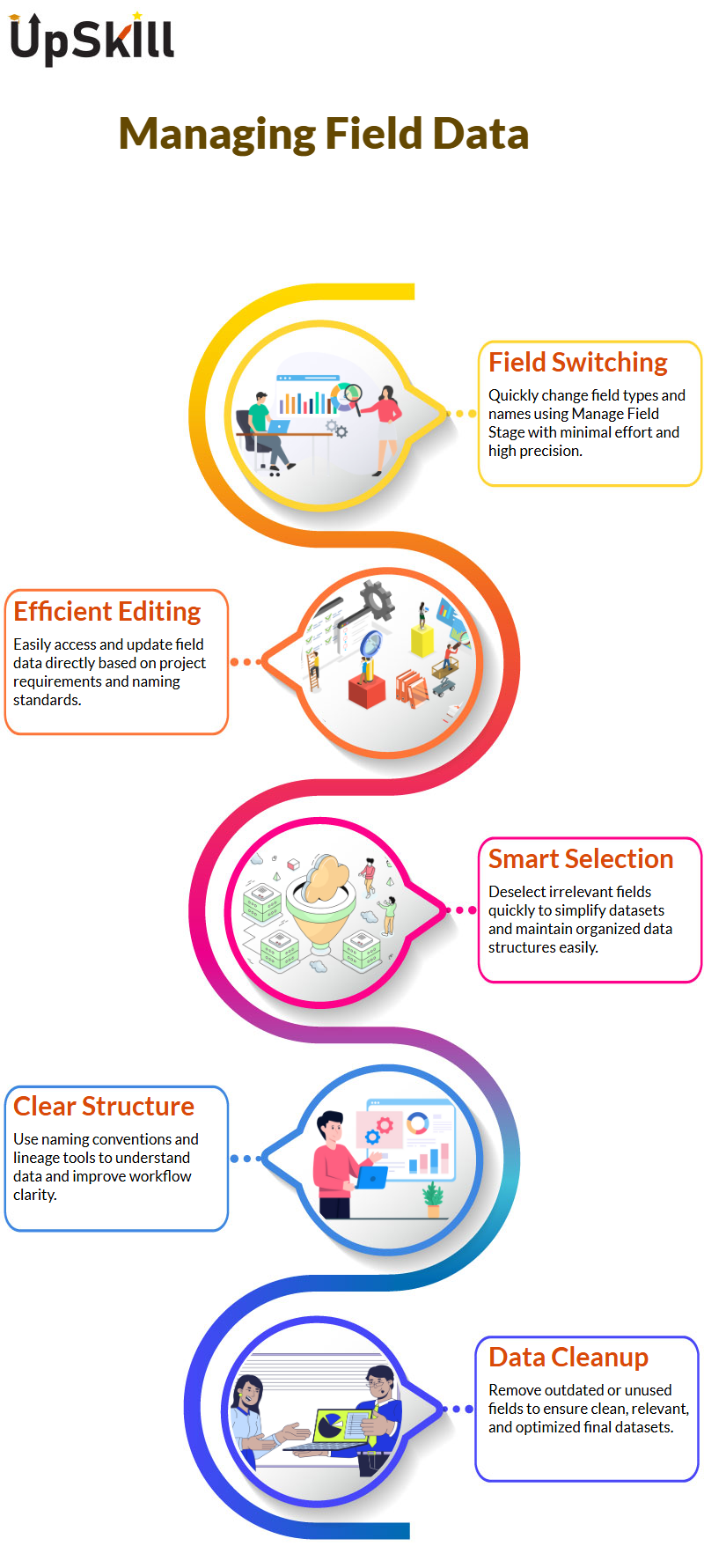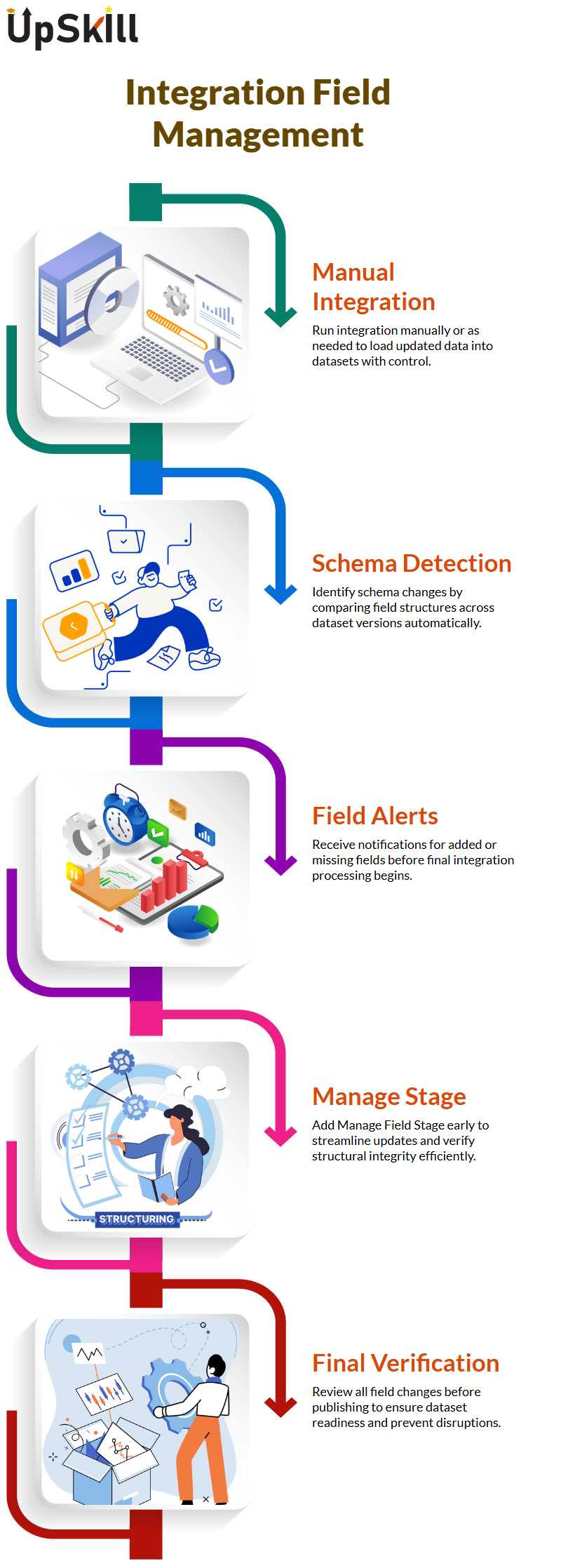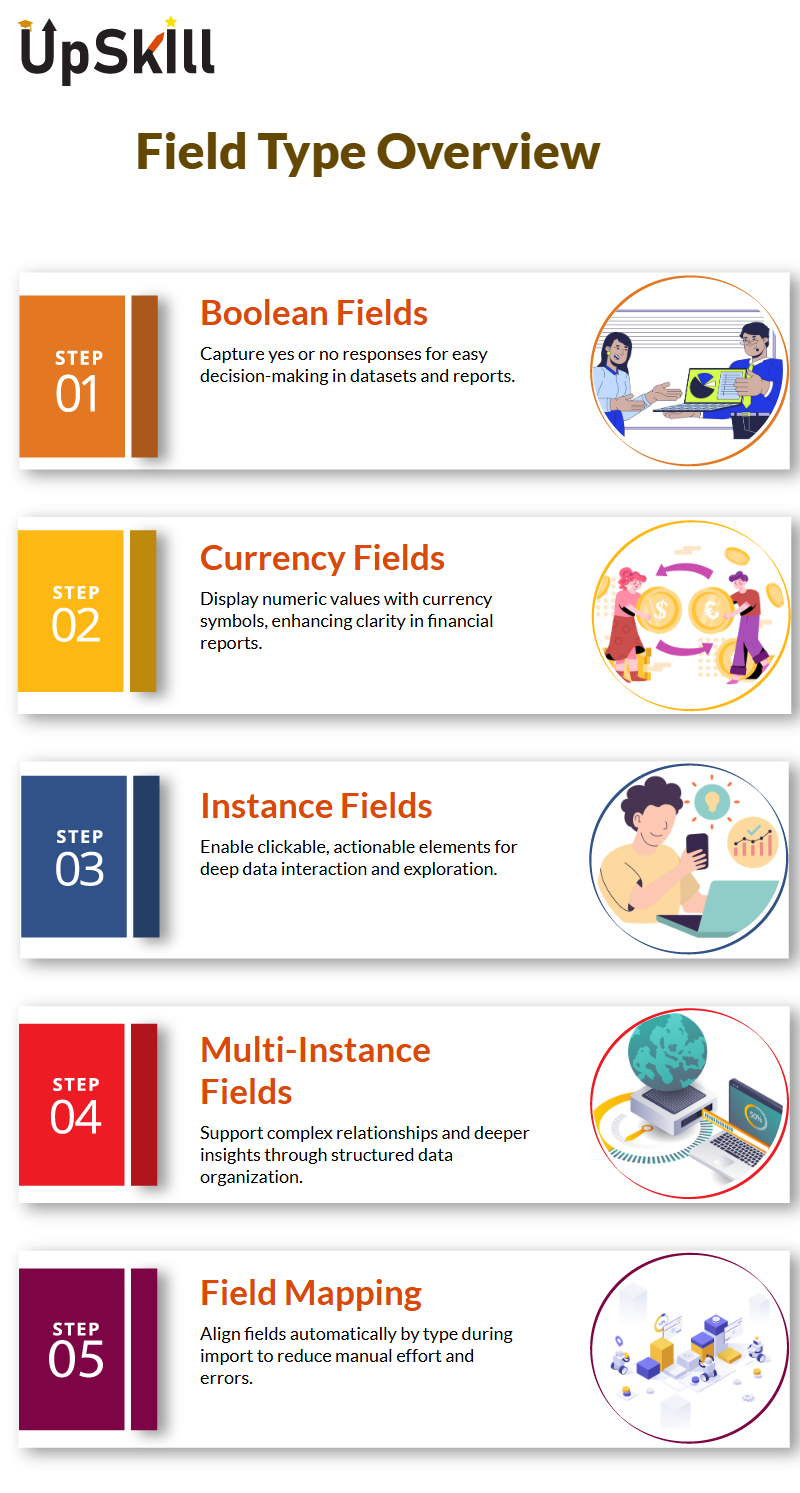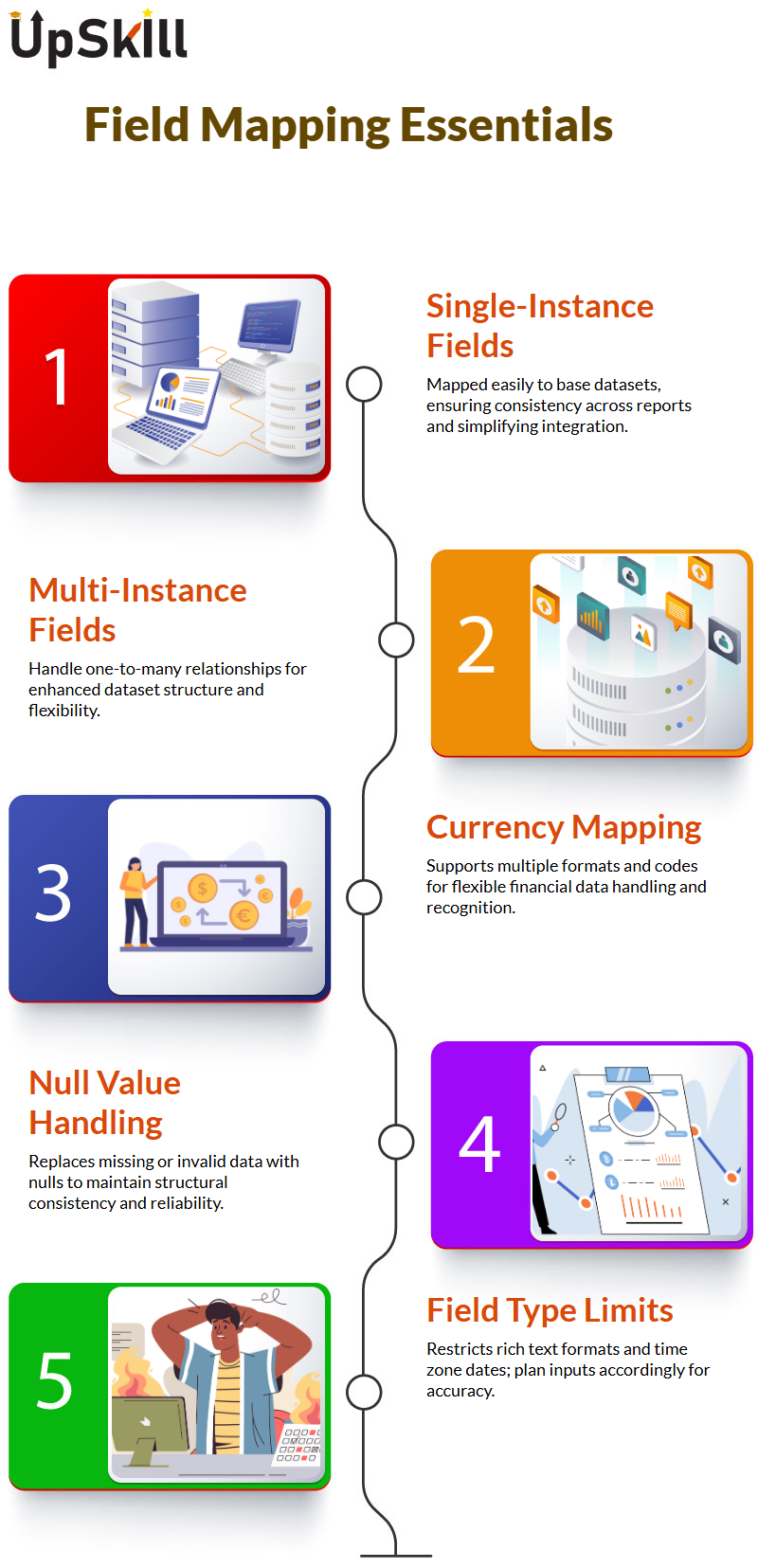Top Workday Training Institutes in Bengaluru near me
Workday Prism Analytics Tutorial
Workday Prism Analytics and Managing Fields
Experience Workday Prism Analytics’ amazing power to manage field stages efficiently while working on datasets. It truly makes for an impressive solution.
Recently while loading files, an unusual issue surfaced during loading: joining wasn’t possible due to differences between case sizes. To address this situation, the Manage Field Stage was introduced.
The Manage Field Stage is an incredible feature, enabling easy switching of field types and names with just a click.
Workday Prism Analytics Tutorial in Bengaluru stands out in particular with its innovative functionality that facilitates selection, editing and viewing of field changes seamlessly – something which we will discuss at length below.
Editing Fields with Workday Prism Analytics
With Workday Prism Analytics, editing fields is now an effortless experience. The Manage Field Stage provides quick access for making any necessary modifications efficiently.
Exploring a data catalog allows for easy discovery of any desired dataset, especially if its structure becomes perplexing. Adopting proper naming conventions helps maintain a smooth workflow while saving time and resources.
At this step, users can make essential edits based on project requirements modifying field types and names, updating existing fields, reviewing data lineages, or working with derived datasets. Workday Prism Analytics Tutorial in Bengaluru makes this entire process seamless and intuitive.
Additionally, any unnecessary fields such as load IDs or parent company identifiers that were once useful but are no longer applicable can easily be removed from the database to keep it clean and relevant.
For those looking to build expertise, a Workday Prism Analytics Tutorial in Bengaluru can offer hands-on guidance tailored to both beginners and experienced professionals.
Workday Prism Analytics Selecting Fields
At Workday Prism Analytics, selecting fields is an integral component of its Manage Field Stage.
Consider working with datasets stuffed with obsolete fields decluttering digital desks is easier with just a few clicks away.
With just the press of a button, any unnecessary fields can be deselected from Workday Prism Analytics’ Manage Field Stage.
An ongoing project involved identifying fields related to load timestamps and unique identifiers.
Although these fields had once served an essential purpose, their usefulness had outlived itself.
Utilizing the Manage Field Stage enabled editors and managers to customize field types and names while eliminating redundant data for an organized approach to data processing.
Workday Prism Analytics ensures that only relevant fields are included in its final reports.
For professionals looking to master these features hands-on, a Workday Prism Analytics Tutorial in Bengaluru can provide comprehensive insights and practical training.

Viewing Field Changes with Workday Prism Analytics
Workday Prism Analytics’ unique ability of viewing field changes provides another powerful feature making it simple to keep tabs on every modification made using Manage Field Stage and giving an accurate depiction of dataset evolution.
Recently, multiple versions of derived datasets were refined by editing or unselecting fields as needed, taking advantage of Workday Prism Analytics Tutorial in Bengaluru lineage view as a guidepost in showing when data went from stage to stage – thus making managing changes less stressful and far more systematic.
Managing Workday Prism Analytics Fields with Precision
Prism Analytics empowers users to fine-tune data management with unprecedented flexibility, by working across various stages. Users have access to add or exclude fields as needed.
Workday Prism Analytics’ key strength lies in its capability of tracking field changes over time, offering precise adjustments at every stage.
One such example would be being able to adjust 33 fields at one stage compared to 41 fields at join stage; this functionality ensures precision at every stage.
One other key aspect is Workday Prism Analytics is being able to monitor these field alterations over time.
Data can be imported into datasets using custom reports, stock files, or external sources. Once setup is complete, these sources become consistent sources; however, as business needs shift it may become necessary to include new fields or make modifications to existing datasets.
Workday Prism Analytics makes these changes seamless and straightforward.
Adapting to Changing Workday Prism Analytics Data Sources
Workday Prism Analytics makes adapting to changing data sources simple. A base dataset generated from a custom report contained information such as worker names, employee IDs, supervisor details and any additional fields.
When this needed to change for instance the platform made it simple by editing this custom report to add in this new field as required.
Once data sources were updated, reimporting them was straightforward; upon the next import, any newly introduced fields automatically appeared, seamlessly fitting into workflow processes and assuring datasets remain up-to-date with recent organizational changes.
Workday Prism Analytics Tutorial in Bengaluru stands out with its adaptable feature allowing data reloads to stay current with organizational developments.
Automating Workday Prism Analytics Data Reloads
By automating data reloads, datasets remain up-to-date with organizational developments.
Workday Prism Analytics’ tools help organizations keep their datasets accurate and up-to-date, such as automatically integrating new hire details. Once a baseline dataset had been set up, new hire details from within their organization needed to be included into it.
Workday Prism Analytics Tutorial in Bengaluru makes the task of updating employee details seamless; its automated integrations regularly run, seamlessly updating any old dataset with details from new employees who enter or leave.
When data was manually loaded after several weeks had elapsed manually reloads were seamless: each update to an already loaded dataset included new details about newly arrived workers who joined or left.
Workday Prism Analytics makes managing updates effortless and reliable by saving both time and ensuring accuracy in its data management process.
Workday Prism Analytics Integration Runs
Integration runs are an essential element of working with Workday Prism Analytics and setting them up is vitally important.
Integrations may be scheduled daily, or more sporadically as desired – at this stage we recommend running them manually on an ad hoc basis for now.
Once approved, integration begins bringing data into the dataset. It’s exciting to watch as timestamps update and records are replaced by fresh ones; this ensures that our dataset always reflects the latest available information.
Role of Manage Field Stage in Workday Prism Analytics
Role of Manage Field Stage in Workday Prism Analytics Tutorial in Bengaluru One of the primary challenges presented by Workday Prism Analytics is managing schema changes; when, for instance, an extra field was added after Employee ID but failed to reflect in its base dataset.
As soon as editing began, an alert appeared in the manage field stage to alert of changes made to data source. This step allows editors to effectively recognize changes within data.
Users will receive notice when new fields or existing ones have been added or subtracted from an application.
Providing for smooth integration and avoiding potential disruption to downstream processes that would go undetected without this step.
Handling Workday Prism Analytics Schema Changes
Workday Prism Analytics Tutorial in Bengaluru excels at handling schema changes through its manage field stage. It detects any differences by comparing source file header columns against any changes identified during comparison.
When new fields are added, the system automatically updates the schema accordingly and relies on XML schemas for these updates.
Changes made after creating custom reports or datasets may lead to discrepancies; thus, it’s imperative that a manage field stage be in place so it can detect any modifications made in source files.
Recommendations for Effective Workday Prism Analytics
While using the manage field stage is optional, its presence should be highly encouraged as a safeguard to guard against unexpected changes that might happen with data sources and impact other systems downstream.
This stage also serves as an additional layer of safety against unexpected data source changes from negatively affecting subsequent systems downstream.
For instance, when third-party systems make changes to a data source, Manage Field Stage alerts administrators so they can decide whether or not to include those modifications into workflows – thus safeguarding against unanticipated errors that might otherwise arise in workflow processes.
Field Management in Workday Prism Analytics
Let’s begin our discussion of Workday Prism Analytics by discussing managing fields. When working with any given data set, one recommendation would be to add the ‘manage field stage” as one of your initial stages within Workday Prism Analytics.
This ensures easier management of any changes made to data sources or fields. Feel secure making modifications like adding or deleting fields knowing that comparison will rely on header rows from source file header rows as reference points for comparisons.
Changes at the end of a source file still benefit from having header rows included; however, adding them makes things much simpler and expedited.
Think about it when publishing your data set with Workday Prism Analytics; everything must be perfect before pushing publish.
By including the Manage Field Stage as one of your last steps before publishing, it allows you to easily verify all changes made since publishing and ensures it is ready for analysis.
Although these tips may seem unnecessary at first, they will save time and stress in the long run.

Field Types in Workday Prism Analytics
Let’s dive deeper into the types of fields supported by Workday Prism Analytics. A data set’s schema determines its number and types of fields; while making changes like adding additional or altering existing field types may alter your analysis significantly.
Now, Workday Prism Analytics supports multiple field types. Boolean fields that capture yes or no responses are supported.
Currency fields in Prism Analytics display not just numeric values but also currency signs like the dollar symbol.
Date fields are included too, though unlike Workday’s regular reporting fields Prism Analytics doesn’t support combined date/time values.
To fully grasp these features, attending a Workday Prism Analytics Tutorial in Bengaluru is highly beneficial for practical knowledge and skill-building.
Practical Insights with Workday Prism Analytics
Prism Analytics supports numeric fields that range in form and function from double, integer and long to standard numeric types along with text fields as well as instances and multi-instance fields for even greater data organization and analysis options.
Workday Prism Analytics brings practical insight through various field types in reports. A text field, for instance, captures textual data while numeric fields handle numerical values seamlessly.
Currency fields add depth and variety to your reporting by offering special formats with currency symbols, giving you more power to generate relevant reports tailored specifically to meet your needs.
Workday Prism Analytics Tutorial in Bengaluru main strength lies in how it handles Boolean fields. No matter whether it’s custom reports or reviewing data sets, Boolean fields make decision making simple and transparent.
Working with multi-instance fields paves the way to more sophisticated data analysis scenarios.
Workday Prism Analytics Instance Fields
Let’s examine Workday Prism Analytics Instance Fields Let’s take a closer look at supervisory organizations within Workday Prism Analytics.
When the interface is navigated, hyperlinks and text fields do not just represent static elements but are instances of data stored therein.
Accessing additional actions, it is remarkable how easily details or actions can be seen or completed directly on instance fields.
They go far beyond being simple text, numeric or date values: these instances of data represent meaningful, actionable instances.
Supervisory organization fields, for instance, are single-instance fields which allow users to click directly onto them to explore details or edit the supervisory organization directly.
With such flexibility at our fingertips, data becomes meaningfully interactable rather than simply sitting there waiting to be looked at later.
Data relationships among instances can be one-to-many, providing deeper insights and connections than ever.
With Workday Prism Analytics Tutorial in Bengaluru, these fields are seamlessly mapped from custom reports into base datasets for maximum efficiency and insight.
Mapping is fascinating because it automatically aligns fields based on their type, such as text fields to text in the base dataset or date fields to dates in it.
Workday Prism Analytics’ ability to handle such mappings enhances accuracy while decreasing manual effort required in mapping them correctly and reduces manual effort significantly.

Mapping and Field Types in Workday Prism Analytics
Workday Prism Analytics allows single-instance fields from custom reports to be linked back to the base dataset in a straightforward way. This mapping ensures consistency across different datasets.
Multi-instance fields, such as additional jobs, follow the same principle but handle one-to-many relationships instead.
Currency fields and Boolean (yes/no) fields are simple to map within Prism Analytics. However, certain restrictions exist compared to standard Workday reporting capabilities for example, Prism does not support rich text formatting fields in reporting, unlike Workday reports.
Date fields are fully supported in Workday Prism Analytics, but time zone-specific date fields are not. It is essential to account for this limitation during data preparation for analytics.
Despite these obstacles, Workday Prism Analytics Tutorial in Bengaluru simplifies the process of mapping fields and creating datasets, making it a more manageable task overall.
Workday Prism Analytics Currency Fields
Workday Prism Analytics allows us to efficiently handle various currency formats. From standard formats like 300.00 USD or USD 300 to more complex structures with currency codes like “USD”, the system handles them without issue.
As part of your custom report creation, ensure the ‘Show Currency Column’ option is selected when creating currency fields to ensure proper recognition by Workday Prism Analytics. This step ensures accurate identification.
Workday Prism Analytics supports multiple formats for data inputs containing and without commas, making it an extremely flexible way of working with multiple currencies.
To use its full potential effectively, always ensure there is at least one currency code present when working with currencies that use other alphabetical codes like EUR or CHF etc.
How Workday Prism Analytics Treats Null Values?
Workday Prism Analytics offers an intuitive solution for dealing with null values; in case any of the relevant key types cannot be located by Workday it displays a null value instead.
Workday ensures data consistency by replacing empty fields with null values to maintain data consistency across datasets.
Workday Prism Analytic’s approach for handling undefined formats in datasets is particularly advantageous when dealing with rich text fields that cannot be recognized, for instance; null values will replace them and help ensure data integrity during reporting.
This method also protects against accidental loss during transport of the dataset itself, for instance if any format mismatch occurs during processing of large batches of unstructured text fields (for instance).

Publishing and Transforming Data in Workday Prism Analytics
Workday Prism Analytics imports and transforms data from reports or external sources, then publishes it as Prism Data Sources for reporting.
It automatically handles null values during publishing: Boolean fields are replaced with false or 0, currency and numeric fields with 0, text or multi-instance fields with blank spaces, and age fields with 0. This ensures clean, consistent data for accurate reporting and analysis.
Data Reporting in Workday Prism Analytics
Publishing data through Workday Prism Analytics ensures all null values are handled appropriately and can help keep costs at an absolute minimum.
Converting field types seamlessly ensures integrity across data sources; for instance, Boolean values turn into false, currency fields become zeros, instance fields become blanks – creating an effortless means of maintaining consistency throughout.
Field-Specific Workday Prism Analytics Null Value Replacements
Workday Prism Analytics offers customized field solutions to replace null values within numeric fields. For instance.
Null values here are automatically converted to zero; and in fields like ‘supervisor,’ Workday Prism Analytics automatically fills blanks instead of leaving null values behind. The process is streamlined; data flows through various stages transforming null values depending on field type.
Workday Prism Analytics ensures data consistency and prevents confusion, providing a powerful solution for data management.
When publishing data sets, Workday Prism Analytics handles null values comprehensively.
No matter whether it is dealing with numeric, Boolean, instance or currency fields, tailored replacements ensure an error-free data source with appropriate structure.

